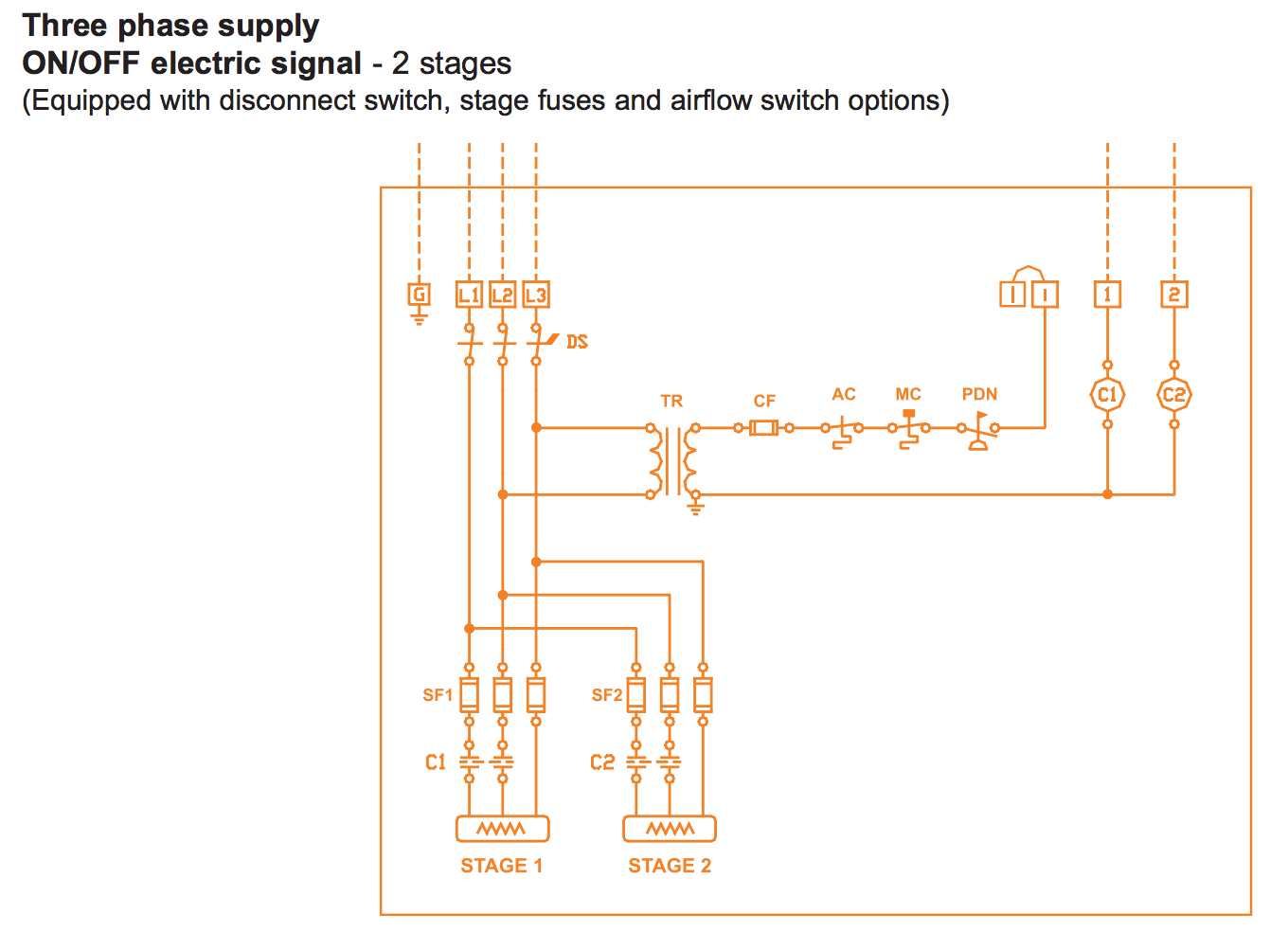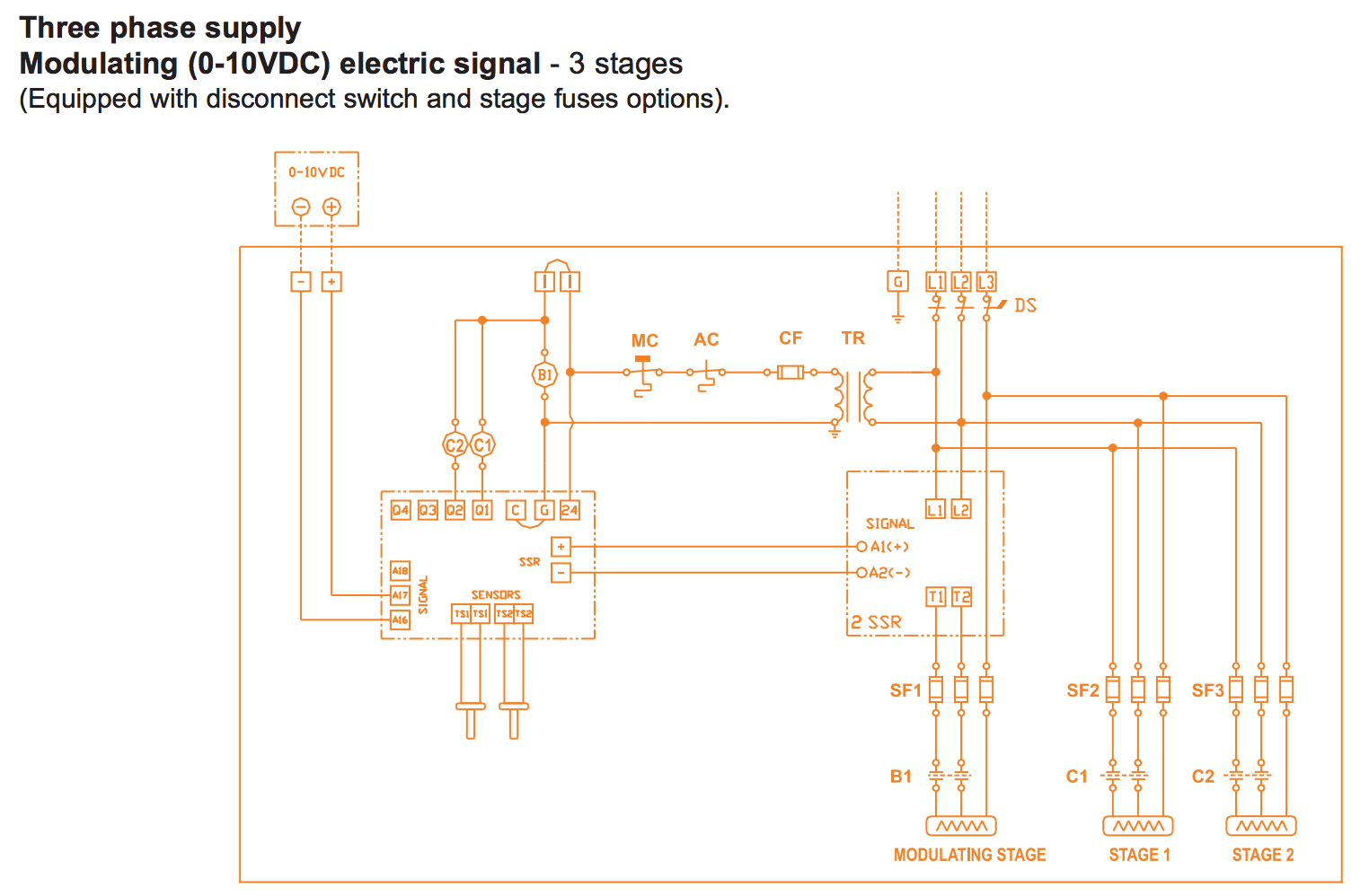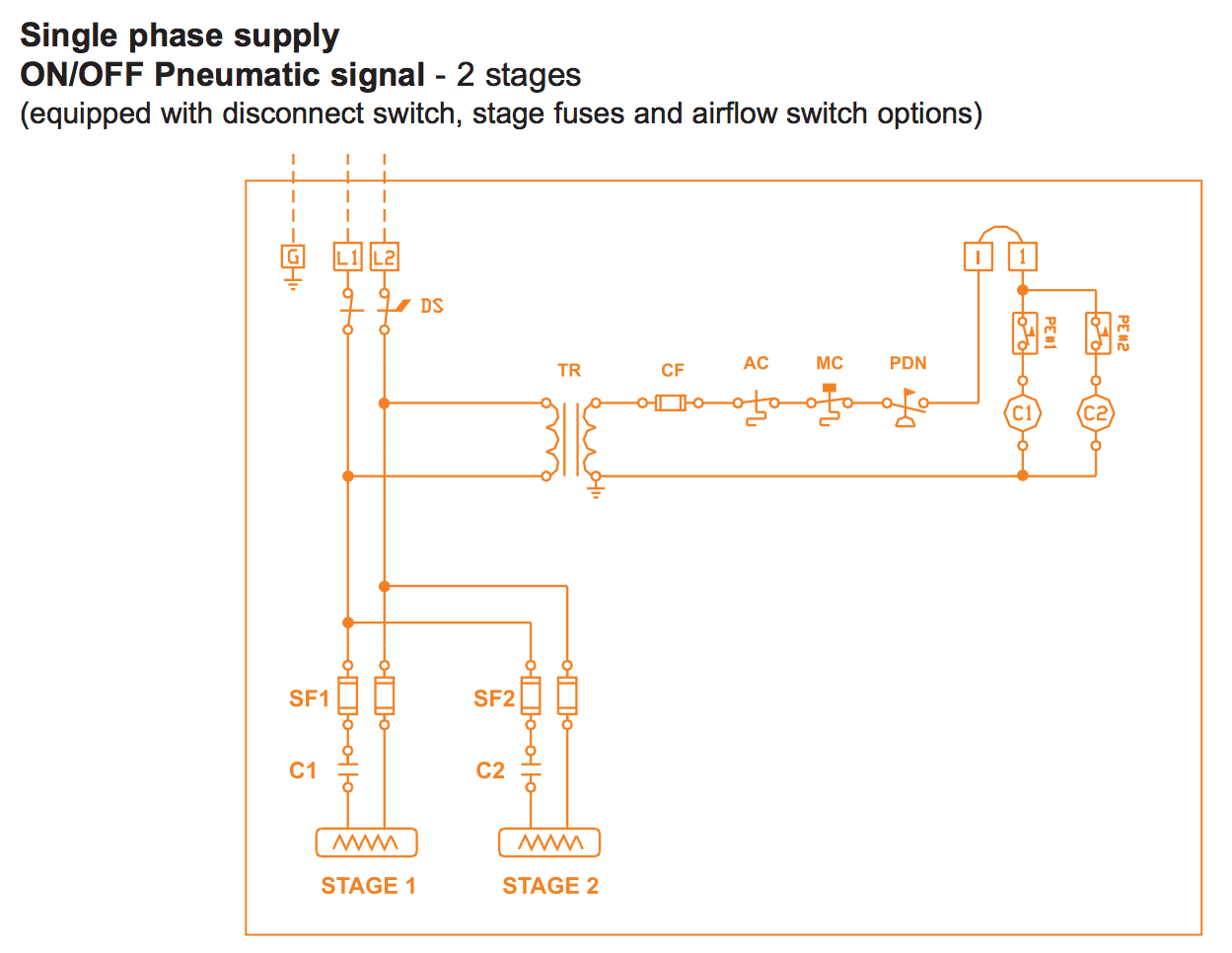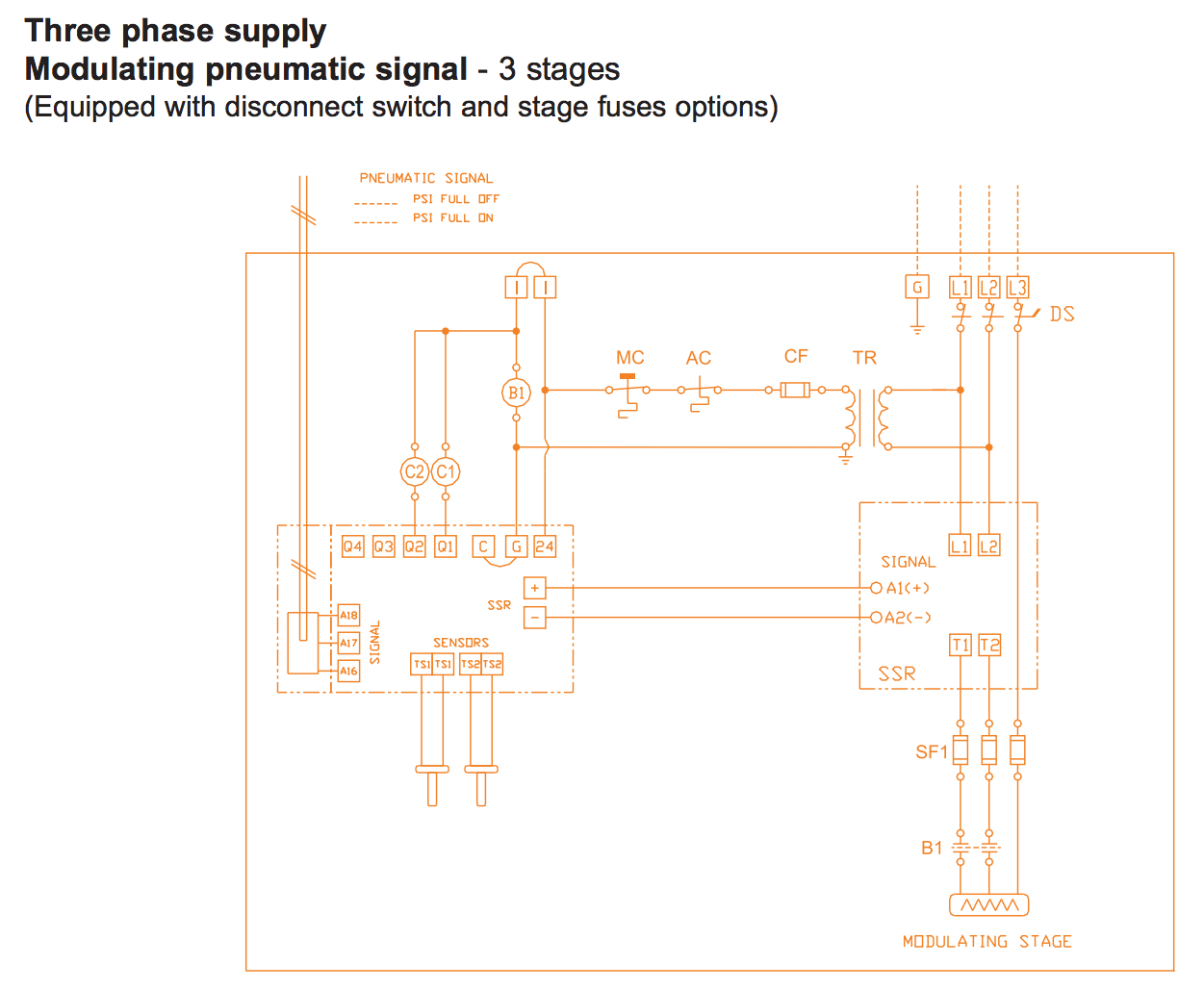Know Your Signals: Control Signals to Heat
The following signal types can control Neptronic heaters: electric ON-OFF, electric modulating, pneumatic ON-OFF and pneumatic modulating. Here is a simple explanation of how each of them operates and what’s inside the control panel for each control signal type.
ELECTRIC CONTROL
ON-OFF Control
With this control system, the heater is either 100% ON at full capacity or 100% OFF. A thermostat dry contact activates the electric heater. The control panel of an ON-OFF electric heater includes the following components:
- Transformer and control fuse
- Automatic thermal cutout
- Manual reset thermal cutout (when required by code, otherwise optional)
- Airflow switch
- Contactor(s)
- Fuses (when required by code, otherwise optional)
- Disconnect switch (when required by code, otherwise optional)

Proportional Control (Modulating)
A perfect example of this type of control system is a lamp with a dimmer or a regulator switch that controls the brightness by changing the applied voltage waveform. On a modulating heater, an electric signal from a proportional thermostat is transmitted to the HEC controller. The HEC activates the proportional stage of the electric heater. Modulating heaters can also have a vernier control with stages ( see TechTime article on Vernier Control). The control panel of a modulating heater includes the following components:
- Transformer and control fuse
- Automatic thermal cutout
- Manual reset thermal cutout (when required by code, otherwise optional)
- Neptronic HEC controller
- Solid-State Relay(s)
- Airflow switch or electronic airflow sensors
- Contactor(s)
- Fuses (when required by code, otherwise optional)
- Disconnect switch (when required by code, otherwise optional)

PNEUMATIC CONTROL
ON-OFF Control
In pneumatic control systems, the heater is controlled with the use of pressurized air. A pneumatic signal from a pneumatic thermostat activates the electric heater. The operation is similar to electric ON-OFF control but uses a pneumatic signal instead of an electrical signal. The control panel of an ON-OFF heater with a pneumatic input includes the following components:
- Transformer and control fuse
- Automatic thermal cutout
- Manual reset thermal cutout (when required by code, otherwise optional)
- Airflow switch
- Pneumatic Electric Switch/Proportional
- Contactor(s)
- Fuses (when required by code, otherwise optional)
- Disconnect switch (when required by code, otherwise optional)

Proportional Control (Modulating)
This control system is similar to electric modulating control, but with a pneumatic signal. A proportional signal from a pneumatic thermostat is transmitted to the HEC controller. The HEC controller activates the proportional heater. The control panel of a pneumatic modulating heater includes the following components;
- Transformer and load fuse
- Automatic thermal cutout
- Manual reset thermal cutout (when required by code, otherwise optional)
- Neptronic HEC controller
- Pneumatic Electric Controller
- Contactor(s)
- Solid State Relay(s)
- Fuses (when required by code, otherwise optional)
- Disconnect switch (when required by code, otherwise optional)

Besides wiring of the power supply, you must connect the appropriate wires to the thermostat for electric heaters and a 1/4” diameter pneumatic signal tube for pneumatic control heaters.